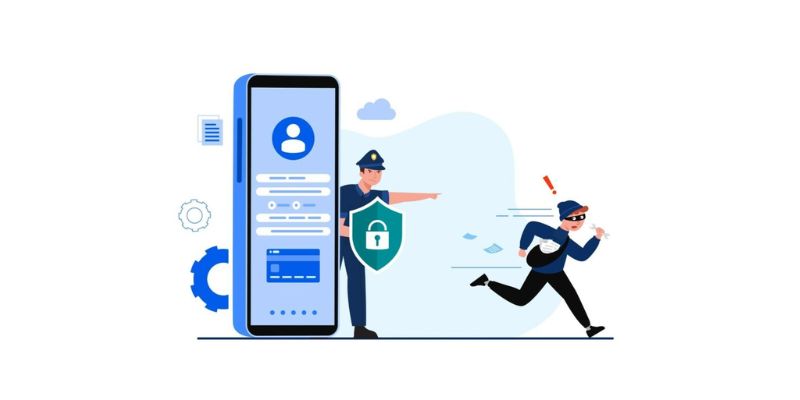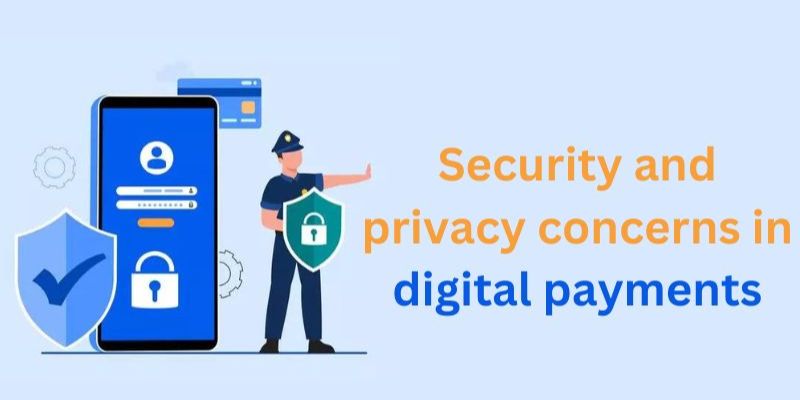Mobile payment security vulnerabilities are like open doors to your digital wallet — inviting for trouble if left unchecked. With the tap of a screen, you buy coffee, snag deals, and even settle bills. But each tap could expose your funds to risks you can’t see. I’m here to arm you with the know-how to spot the dangers and shield your transactions. Whether it’s savvy hackers or sly scams, understanding and combating these threats is your financial safety net. Let’s lock down your mobile payments and keep your money as secure as your morning coffee is hot.
Understanding Mobile Payment Risks and Digital Wallet Threats
The Evolution of Digital Wallet Threats
Before, a thief had to steal your wallet to get your cash. Now, it’s different with digital wallets. As we moved to apps, so did the thieves. They’ve gotten smarter with tech, so we face new kinds of risks. Digital wallet threats include hacks where they trick your phone into giving up your money info. They also send fake messages and make apps that look real but are traps.
Recognizing Common Mobile Payment Risks
So, what does a mobile payment risk look like? Well, imagine buying coffee with a tap on your phone. Handy, right? But that tap opens doors. If a bad guy finds a way, they could tap into your payment too. Think of contactless payment fraud like someone jumping into your taxi as the door closes. You didn’t invite them, but they slipped in uncaught.
Securing online transactions saves you this hassle. You’d use things like two-factor authentication. Think of it as a double-check. You prove it’s really you trying to pay, not some stranger. Data breaches in fintech have also been an issue. This is when your personal bank info leaks out, quite like a secret spreading fast. But why do these breaches happen? Often, it’s weak spots in an app’s armor or a shop’s system.
NFC (Near Field Communication) and QR codes make life easier for tap-and-go buys. But are NFC payment safety and QR code payment security tight enough? It’s a battle. For every new lock on our end, there’s a lockpicker out there trying to pop it open. Encryption for mobile pay and tokenization in mobile payments are our best locks right now. These hide your card info in codes that are super hard to crack.
Biometric authentication, like using your fingerprint, can also help keep things tight. This kind of tech checks it’s you by something unique about you. No two prints are the same, not even twins! Yet, mobile banking malware is like a sneaky virus. It slips onto your phone, aiming to swipe your cash without you spotting it. Phishing scams trick you into sharing your password, then they sneak into your account.
E-payment compliance regulations, think of them as rules to keep folks playing fair, are there for your protection. They set standards like the EMV chip in your card, doing its best to keep your info safe. The Payment Card Industry Data Security Standard, or PCI-DSS, is kind of a rulebook for any business taking card payments. It tells them how to protect your card details.
Now, safeguarding mobile payment data, should you worry? The short answer: Yes, it’s always good to stay sharp. Always check apps from official stores only and watch out for any odd charges on your account. Keep your phone’s software fresh with updates that patch up any weak spots.
Let’s be real, the battle against risks in mobile payments is ongoing. But by knowing what’s out there and how to guard against it, you’re already stepping up your game. Be smart, be safe, and keep an eye out for tricks and traps. Together, we can keep those taps just for coffee, not for thieves.

Strengthening Your Cybersecurity for E-Payments
The Role of Two-Factor Authentication Effectiveness
What is two-factor authentication? It’s a way to double-check someone is who they claim to be. When you log in online, this helps keep your info safe. Think of it like an extra lock on your online life. You put in your password, but you also need a code sent to your phone or email.
Now, why does this matter for e-payments? Money matters are always tempting for bad guys – hackers who want to steal. With two-factor, even if they get your password, they can’t get in without that second code. It’s like having a guard who asks for a secret pass before letting anyone into your treasure room.
Two-factor is not just good; it’s a must for keeping digital money safe. Banks and payment apps use it a lot. With it, even if there’s a big data breach, your money and personal details are much harder to steal.
Let’s say you use an app for mobile pay. If that app didn’t have two-factor, a hacker with just your password could send your money flying away to their pockets. But with two-factor, they’d be stuck. They’d need your password and access to, say, your phone. It’s a powerful way to stop bad surprises.
Exploring Encryption Standards for Mobile Pay
Next up, let’s chat about encryption standards. What’s encryption? It scrambles your sensitive data so only the right people can read it. When you pay with your phone, encryption turns your private info into a code. It’s a sneaky move against spies and thieves.
Why does this matter? Because when you buy something, your credit card number flies through the air. But with good encryption, it’s turned into a secret message. Hackers might catch it, but they can’t understand it. Your info stays safe and unknown to them.
Mobile pay uses strong encryption, usually like what banks trust for their own secrets. It turns your payment info into a mess of letters and numbers that make no sense to hackers. But the good guys – the ones you’re buying from – they can unscramble it. So your money goes where it should, and your details don’t get spilled.
Encryption is your silent hero in e-payments. It works in the background, guarding your money talks at every step. Whether you tap your phone or send money in an app, encryption is there, keeping peeping toms out of your pocket.
With two-factor and tough encryption, your mobile payments are like a vault. They keep what’s yours, truly yours. Keep an eye on your e-payment tools. And always pick the safest options your apps offer. Your money deserves the best shields we’ve got.

Preventing Contactless Payment Fraud and Unauthorized Transactions
NFC Payment Safety Measures
Near Field Communication (NFC) is a godsend for folks who love quick pay methods. But as cool as tap-to-pay is, it’s got risks. Hackers dream about stealing your hard-earned cash through NFC. So, keep your money safe by using phones with top-notch security. Always lock your phone. A PIN, pattern, or password can stop thieves cold. Also, turn off NFC when you’re not using it. It’s like not leaving your car keys in the ignition.
For even better safety, use wallets that need your fingerprint. This tech is called biometric authentication. It makes sure you – and only you – can make that payment. Another hero in our story? Two-factor authentication! It sends a code to your phone that you need to punch in before buying stuff. It’s like a secret handshake between you and your digital wallet.
If your phone gets lost or someone steals it, act fast. Many apps let you freeze your accounts in a snap. This stops any would-be thief from going on a shopping spree on your dime. And one more piece of advice: keep your phone’s software fresh. Updates can fix security holes that hackers love to squeeze through.
Now, what if you think something fishy’s happening with your account? Contact your bank or the service quick. They can help sort things out and keep your money safe.
Strategies to Secure QR Code Payment Security
QR codes are awesome for paying without touching buttons or handing over cards. You just scan and go. But, these little black and white squares can hide traps. Bad guys can swap legit codes for nasty ones that lead to phony sites.
To stay safe, only scan codes from people and places you trust. Don’t trust a random code stuck on a lamppost. That’s like taking candy from a stranger – bad idea. Checking the URL after scanning can keep you in the clear. Make sure it matches the place you’re trying to pay. A weird URL is a huge red flag! It can mean someone’s trying to steal your info.
When you use a QR code to pay, see if the app lets you review the payment before sending it through. This gives you a second to catch any mistakes or sneaky changes. Finally, protect your app with a strong password or biometric locks. Your face or fingerprint can stop hackers from getting into your accounts if they get their paws on your phone.
Just like with NFC, if your phone goes missing, use an app to block it fast. And never skip those software updates. Your phone’s safety net is only good if you keep it up to date.
By being sharp and using these tips, you can tap, scan, and pay without fretting about someone snagging your info. Happy and safe spending, friends!

Implementing Advanced Security Features in Mobile Payments
The Reliability of Biometric Authentication
You use your phone to buy a coffee. Or to pay for a ride. It’s simple, with mobile payments. But are these payments safe? Yes, when we add good security, like biometric authentication. What’s that? Think of your fingerprint. Your face scan. Your voice. These personal traits can lock and unlock your payment apps.
So, how well does it work to keep your money safe? It works great. No one else has your fingerprint. Or your facial features. This makes it hard for a bad guy to pretend they’re you. But it’s not just about keeping the bad guys out. It’s about making it easy for you to get in. And do it quick. That’s what we want from our technology, right? Fast and safe.
Now, I know what you’re thinking. What if my fingerprint doesn’t work? What if my phone can’t see my face? Sometimes, tech can be tricky. But, usually, these hiccups get fixed fast. These tools have become very reliable. And as more of us use them, they get better and smarter. That’s good news for our money.
Tokenization in Mobile Payments for Financial Data Protection
Next up, let’s talk about tokenization. Big word, but a simple idea. When you buy something, your payment info turns into a code. A one-time code. This means that your real credit card number stays secret. Every time you tap to pay or scan a QR code, tokenization is at work. It’s a strong shield. It keeps your financial data safe from hackers.
What about when you lose your phone? Or if someone steals it? With tokenization, your card details are not really on your device. They are just tokens. Codes that won’t mean a thing to anyone else.
Tokens are like disposable numbers. They’re used once, then they’re gone. This is good. It’s like having a new credit card for each buy. Even if a bad guy gets that token, it’s no good after that buy. They can’t use it again. And they can’t get your card number from it.
Using tokenization, you can trust your mobile payments more. It’s one of the best ways we have to fight off hackers. And it’s happening in the background. You don’t have to do a thing.
So, there you have it. We’ve talked about locking down your payment apps with your own personal traits. And how turning your payment details into a one-time code keeps your money info safe. These advanced features are parts of a tough shield. They protect your hard-earned cash in this fast-moving digital world. And that’s a big win for all of us.
In this post, we’ve dug into the risks that come with digital wallets and mobile pay. We learned how threats have grown and what common dangers to watch for. We also tackled how to boost your e-payment security, discussing two-factor authentication and encryption.
But we didn’t stop there. We covered ways to keep your NFC and QR code payments safe from fraud. Plus, we checked out high-tech security like biometric checks and tokenization. These tools are here to guard your money’s safety online.
So, always stay sharp and use these tips. Protect your cash like a pro. Safe mobile payments mean less stress and more time enjoying your gadgets and tech. Keep your eyes open and use what we’ve talked about. You’ve got this!
Q&A :
What are the most common security vulnerabilities in mobile payments?
Mobile payments have gained immense popularity due to their convenience, but with this ease come various security vulnerabilities. Some of the most common ones include weak authentication processes, inadequate encryption, exposure to malware and phishing attacks, and system exploits due to outdated software. Businesses and consumers are advised to prioritize strong password policies, use two-factor authentication, and regularly update their mobile payment applications to mitigate these risks.
How can consumers protect themselves from mobile payment security threats?
Consumers can enhance their security while using mobile payment platforms by following several best practices. Firstly, they should only download payment apps from trusted sources to avoid malware. Using strong, unique passwords and enabling two-factor authentication adds an extra layer of protection. Additionally, keeping their mobile OS and payment apps updated ensures they have the latest security patches. Vigilance against unsolicited payment requests and phishing links is also essential to prevent unauthorized access.
Are mobile payments more secure than traditional credit cards?
Mobile payments can be more secure than traditional credit cards due to the use of advanced technologies like tokenization, which replaces sensitive card details with a unique code during transactions. Moreover, mobile payments often require biometric authentication, which adds another layer of security. However, like any platform, the level of security depends on the measures taken by both consumers and providers. Regular updates, strong authentication, and secure networks are crucial for maintaining security in mobile transactions.
Which mobile payment method is considered the most secure?
Currently, there is no universal consensus on which single mobile payment method is the most secure, as security can vary based on the technology used and the user’s security practices. However, methods that use tokenization, end-to-end encryption, and biometric authentication are generally regarded to be more secure. Services like Apple Pay, Google Pay, and Samsung Pay are often cited as leading the way in secure mobile payment technologies due to their combination of these advanced security features.
What should I do if I suspect fraud or a breach in my mobile payment?
If you suspect that your mobile payment account has been compromised, you should immediately report it to your service provider. Additionally, monitor your bank statements and credit report for unauthorized transactions. Changing your passwords, revising security questions, and ensuring your mobile device’s software is up-to-date are critical steps. For extra security, consider disabling the mobile payment feature until the issue has been fully resolved and all vulnerabilities are addressed.

